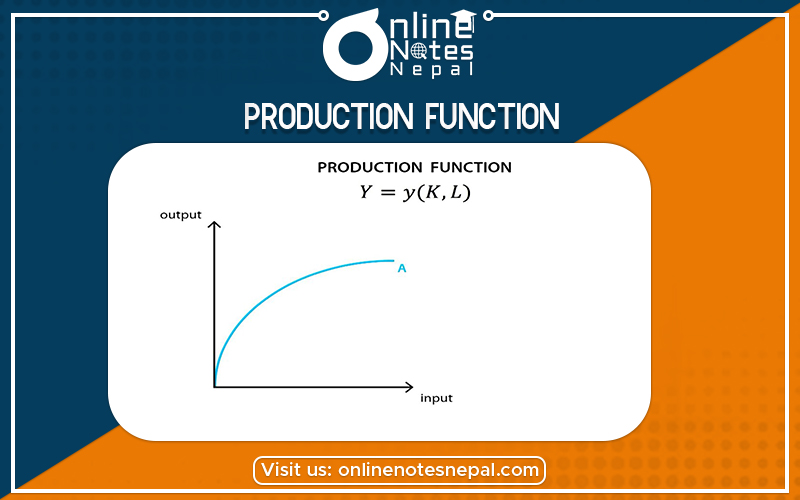Published by: sadikshya
Published date: 02 Jul 2021

Production function expresses the technology or mathematical relationship quantity of physical inputs and output. In other words, it shows with a given state of technological knowledge and during a particular period of time how much can be produced with a given amount of input. According to Stigler “production function is a relationship between inputs productive services per unit of time and output of product per unit of time. Thus we can calculate that production function is the technical relationship between the quantity of goods production and the factor of production necessary to produce it”. It may be express in the form of the equation.
X=F (LD, L, C, M, T)
Where,
X= quantity of output
F= functional relationship
LD= land
L= Labor
C= capital
M= management
T= technology
All input is necessary to produce all goods and services. But it is not necessary all inputs are equally used to the production of goods and services.
There are three types of production functions.
It is the total output that is produced with a given amount of factors inputs and technology are a given time period. For example, if units of labour combined with two units of capital produce 160 pens every day then 160 pens are the total product per day.
Average product refers to the per-unit output of a commodity. It is the total output of a commodity divided by the total quantity of outputs use in an average product.
Marginal production is the additional output produce by employing one additional unit of a variables input holding the amount of all other inputs constant. In other words, it is the change in the amount of a variable input by one unit.